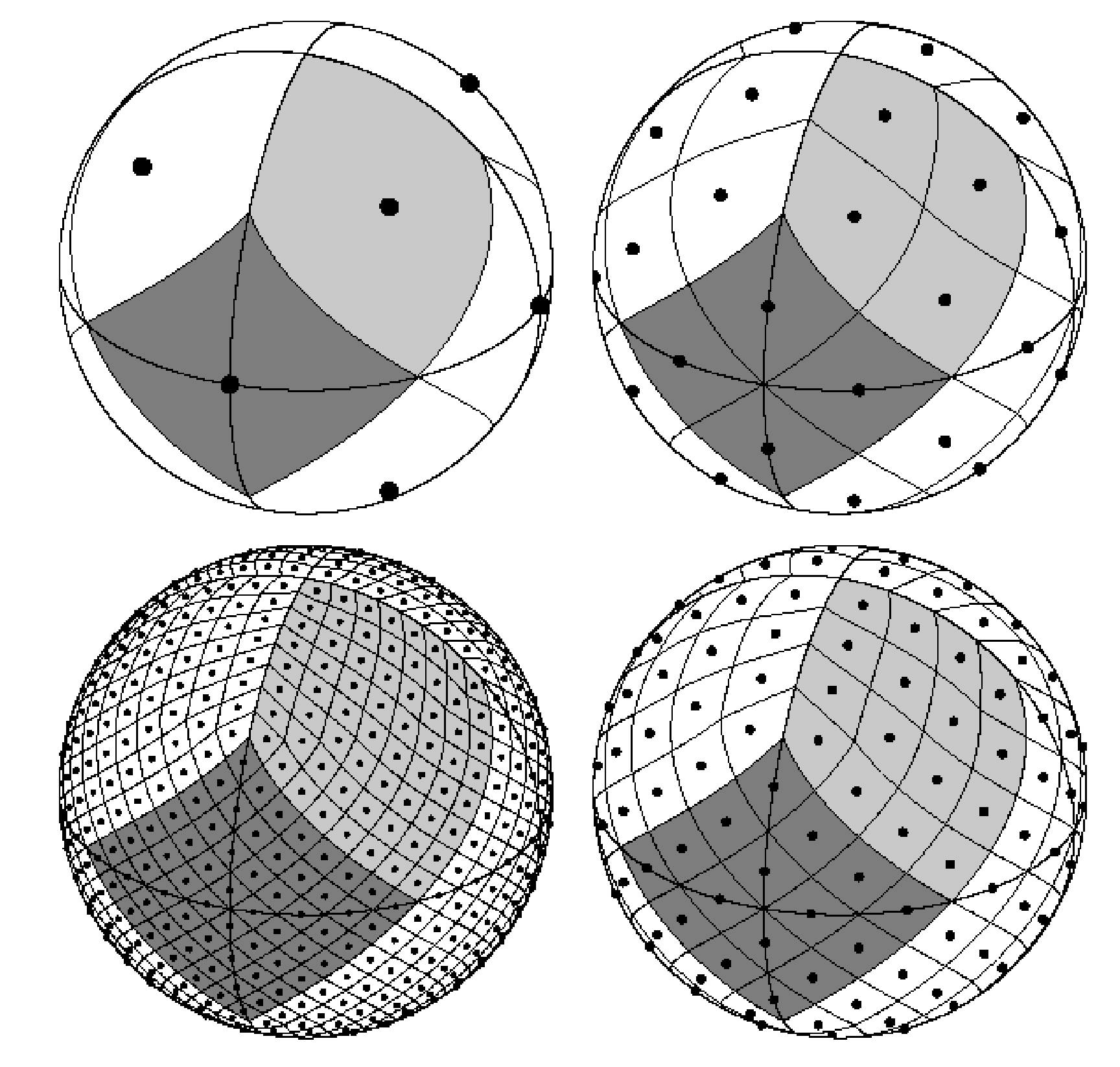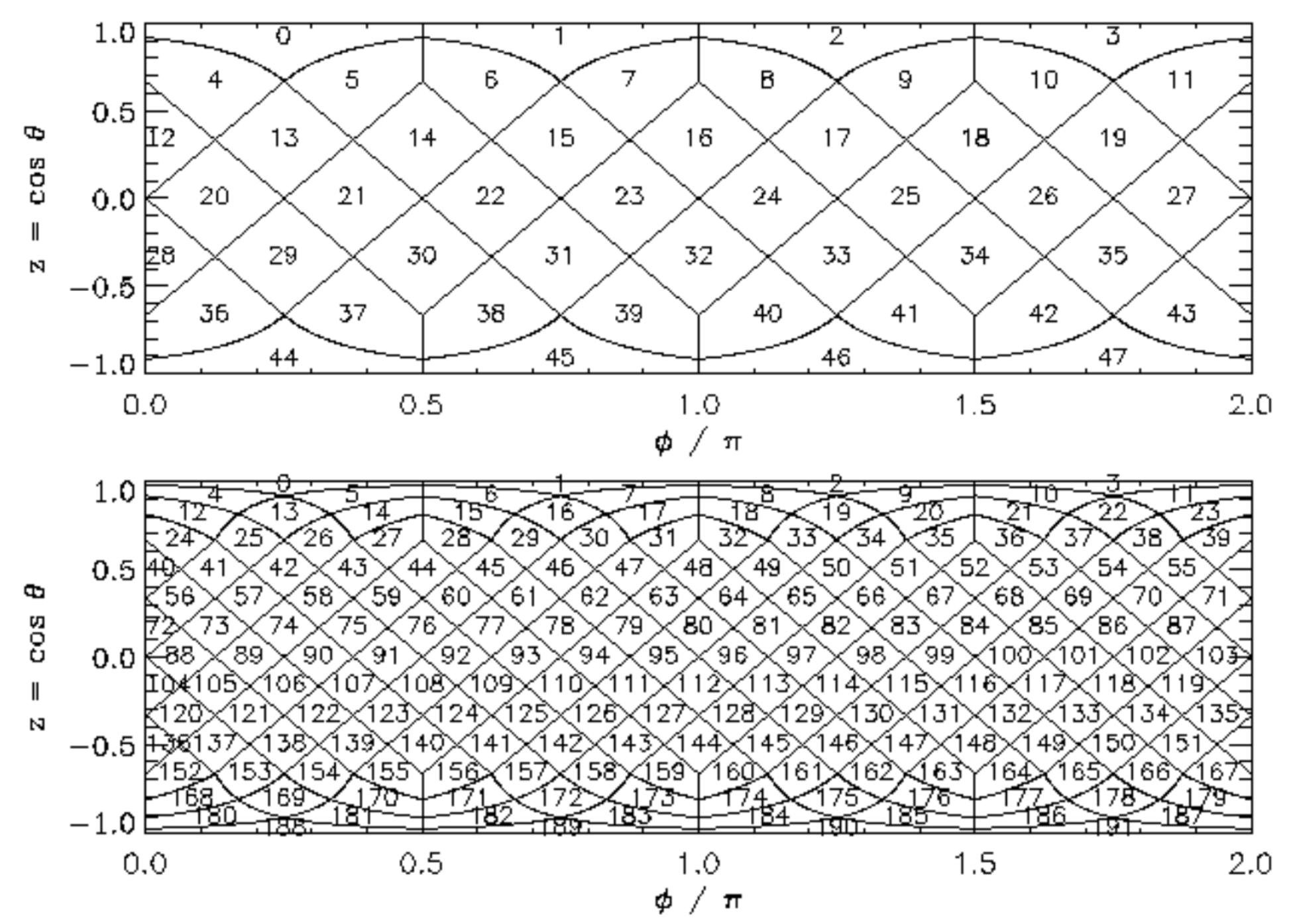This article describes the pixelization phase of the data processing. The FIMS and SPEAR procedures were similar for this step, except for the difference in available spatial resolutions.
On this page...
The HEALPix Scheme
The all-sky data were spatially binned using the HEALPix scheme (Hierarchical Equal Area isoLatitude Pixelation). HEALPixelization subdivides the spherical surface of the sky into curvilinear quadrilaterals pixels, with each pixel's surface area equal to that of every other pixel.
The spatial resolution of a HEALPix scheme is parameterized as Nside, which is equal to the number of subdivisions along the side of a baseline HEALPixel (where the baseline HEALPixel at Nside=1 spans 1/12th of the sky; see Figure 1 below). The number of HEALPixels in the sky is equal to 12*Nside2. Later processing steps (e.g., Star Removal) were performed at a spatial resolution of Nside=512, which corresponds to a HEALPixel size of about 7 arcmin by 7 arcmin. Lower-resolution maps with smaller Nside were constructed from the Nside=512 maps.
Figure 1- clockwise starting from the upper left, HEALPix subdivisions of the sky for increasing spatial resolutions of Nside = 1, 2, 4, and 8. This figure is from the HEALPix Primer and Górski et al. 2005, ApJ, 622, 759 © AAS. Reproduced with permission.
HEALPix maps parameterize the two spatial dimensions of sky coordinates as a one-dimensional array, following a pre-determined pixel ordering scheme as shown in Figure 2 below. FIMS-SPEAR data at MAST follows the "ring" pixel ordering scheme (in which the pixel number winds down from the north to south pole through consecutive isolatitude rings), with "implicit" ordering (meaning that a value is provided for every pixel on the sky, even if that value is NaN).
Figure 2- the "RING" ordering scheme for Nside=2 (top) and Nside=4 (bottom). This figure is from the HEALPix Primer and Górski et al. 2005, ApJ, 622, 759 © AAS. Reproduced with permission.
Data products were originally created using HEALPix IDL facilities, and subsequently edited by the MAST team using healpy (Zonca et al. 2019, JOSS, 4, 1298).
Hyperspectral HEALPix Maps
FIMS-SPEAR hyperspectral HEALPix maps are unusual in that they also have a wavelength axis, with a spectrum for each HEALPixel. Fundamentally, FIMS-SPEAR hyperspectral maps are 2-dimensional arrays, where one dimension is spatial and the other is wavelength. The detailed structure of these files is presented in File Names and Content. Standard HEALPix software like healpy are not currently set up to handle hyperspectral data by default, and FIMS-SPEAR users are strongly encouraged to explore the Tutorials to learn how to wrangle these structures.

